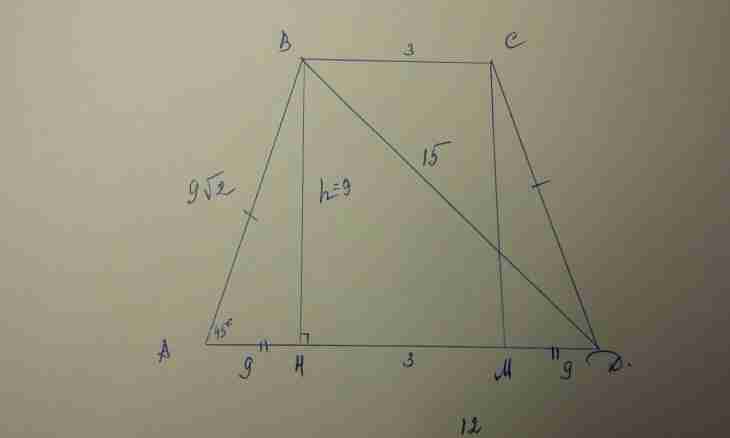The trapeze represents a quadrangle with two parallel and two not parallel parties. To calculate its perimeter, it is necessary to know the sizes of all parties of a trapeze. At the same time data in tasks can be different.
It is required to you
- - calculator;
- - tables of sine, cosines and tangents;
- - paper;
- - drawing accessories.
Instruction
1. The simplest option of a task – when all parties of a trapeze are given. In this case they need just to be put. It is possible to use the following formula: p=a+b+c+d where p – perimeter, and are designated by letters a, b, c and d the parties, opposite to the corners designated by the corresponding capital letters.
2. The isosceles trapeze is allowed to eat, it is enough to put two of its bases and to add to them the doubled size of the party. That is the perimeter in this case is calculated on a formula: p=a+c+2b where b is the party of a trapeze, and and with – the bases.
3. Calculations will be a little longer if some of the parties it is necessary to calculate. For example, the long basis, corners and height, adjacent to it, is known. You need to calculate the short basis and the party. For this purpose draw ABCD trapeze, from the top corner of B carry out BE height. At you the triangle to AVA will turn out. The corner is known to you And, respectively, you know its sine. In data of a task also height of BE which at the same time is a leg of a rectangular triangle, opposite to a corner known to you is specified. To find a hypotenuse of AV which at the same time is the party of a trapeze it is enough to divide BE into sinA. In the same way find length of the second party. For this purpose it is necessary to carry out height from other top corner, that is CF. Now the bigger basis and the parties are known to you. For calculation of perimeter of it it is not enough, a size more of the smaller basis is necessary. Respectively, it is necessary to find the sizes of pieces of AE and DF in two triangles formed in a trapeze. It can be done, for example, through cosines of corners of A and D known to you. The cosine is the relation of an adjacent leg to a hypotenuse. To find a leg, it is necessary to increase a hypotenuse by a cosine. Calculate perimeter on the same formula further, as in the first step, that is having put all parties.
4. One more option: two grounds, height and one of the parties are given, it is necessary to find the second party. It is also best of all to do it with use of trigonometrical functions. For this purpose draw a trapeze. Let's say the bases of AD and BC and also the party of AV and height of BF are known to you. According to these data you can find A corner (through a sine, that is height relation to the known party), AF piece (through a cosine or a tangent as the corner is already known to you. Remember also properties of corners of a trapeze – the sum of the corners adjacent to one party is 180 °. Carry out CF height. At you one more rectangular triangle in which you need to find a hypotenuse of CD and a leg of DF turned out. Begin with a leg. Subtract from length of the lower basis length top, and from the received result – length of AF piece already known to you. Now in a rectangular triangle of CFD two legs are known to you, that is you can find a tangent of angle of D, and on it – and a corner. After that it will be necessary to calculate side of CD through a sine of the same corner as it was already described above.

